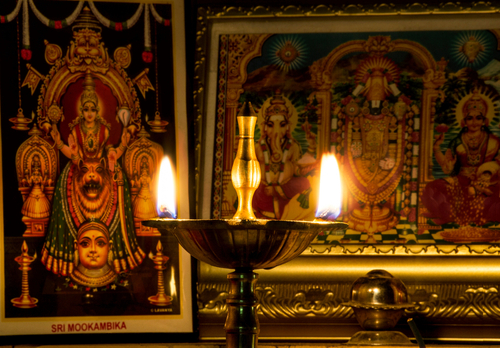Positioning | Essential Tips | Must Know | FAQ
Pooja Ghar is where hearts are full, peace flows through the mind, and positivity surrounds you.
To maintain that, it should be built according to Vastu shastra. Vastu is the connection that helps you connect with nature and invites positive vibes and prosperity. Placing Pooja Ghar in specific directions enables you to communicate with the deity and brings you closer to nature.

If you reside in an east-facing house, then pooja ghar must be planned in the Northeast direction. Jupiter is the lord of the northeast direction and is also known as Ishan Kona. This most auspicious corner is like the engine to the train, guiding the entire train. A minor fault in the machine will disturb its entire work. Similarly, a minor dosha in the northeast will adversely affect the family.
Pooja Ghar plays a crucial role in Vastu shastra, and the positioning of the Pooja room in an east facing house must be planned according to Vastu guidelines. It further ensures maximum positive vibes in the occupant’s life.
Also, read North east facing house Vastu plan!
Puja Room Positioning In East Facing House

Vastu Shastra has become an integral part of architectural design as it promises to bring health, wealth and prosperity to life. To attract happiness and harmony for the house and its occupants, puja ghar in the east-facing house should face north or east. The second best options for puja rooms are west and east directions.
Praying towards the north symbolises opportunities, while the east attracts good fortune and growth. Moreover, placement and facing of idols also play a vital role in puja room Vastu.
- Shivling must be planned in the northern area of your house.
- Place lord Ganesha to the left of goddess Lakshami and Saraswati to the right of goddess Lakshami.
- Hanuman Ji’s idol in the puja room must always face the south.
- Brahma, Vishnu, Surya and Mahesh must face the west.
- Durga, Kuber and Ganesh must face the north.
Essential Tips Homeowner Must Know about Temple:
There may be certain drawbacks if one does not follow the best practices of Vastu Shastra. Hence, to eliminate such issues, occupants must try and implement all the Vastu strategies for the puja room to eliminate such issues.
| Must Know | Must Avoid |
|---|---|
| The ground floor is the best option for the puja room. | The Puja area must not be under the passage or staircase. |
| Northeast is the first best direction for the puja room. | Puja room must not face the bathroom. |
| Devotees must face east or north while praying. | Religious idols must not face each other. |
| Copper vessels are ideal for puja room accessories. | Do not use the puja room for storage or any other purposes. |
| Windows and doors of the puja room must open towards the east or north. | Do not hang or use pictures of the dead. |
| Paints and lighting must be done in light colours. | Do not place mandir in a bedroom. |
| Try to construct a dome-shaped roof for the puja room. | Do not keep broken idols in the puja room. |
While building a house, it is essential to find the best place for the pooja ghar since it is the soul of the house. The deities should not stand directly on the floor but on a raised platform. To create a cheerful ambience, a pooja ghar must have these things.- Lights or diyas, a holy book, flowers and pictures of deities.
Frequently Asked Questions:
Can we install a mandir in the living room?
If there is any space restriction, you can set up a small mandir on the east wall of your living room.
Can we install a small mandir in Kitchen?
You can install a small mandir or religious idol in the Kitchen, but cover the temple with a curtain when not in use.
Which is the second best option for the pooja room in an east facing house?
If you cannot plan the mandir in the northeast direction, you can also place the idols in the east or west direction.
